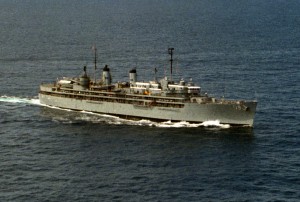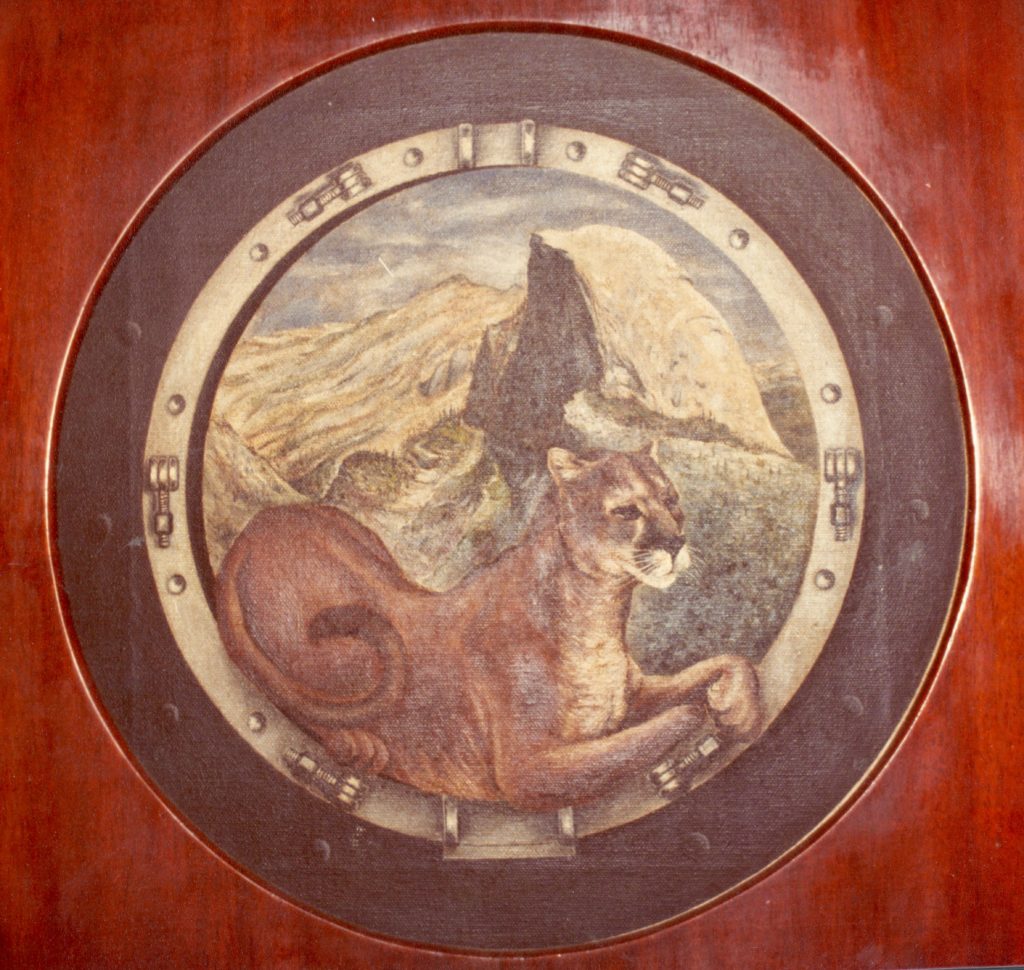I was saluted when I crossed the brow and reported aboard to the quarterdeck watch. As the OOD called the exec and the captain, the messenger of the watch immediately escorted me up to the 01 Level, starboard side, just aft of the wardroom to the Executive Officer’s Office and stateroom. Commander Brian Sheffield rose to meet me. Brian was an affable, chubby man with thinning red hair.
* * *
Earlier, I had learned Brian and the previous CO, Captain Tim Roberts were TARS (Training and Administration of Reserves). A TAR officer was primarily responsible for being active duty administrators of reserve programs. Their duty stations alternated between reserve commands and non-reserve assignments, occasionally on normal at-sea duty.
In 1972 when I had requested return to active duty while I was sports editor of the Watertown (NY) Daily Times, my Bureau of Personnel (BUPERS) liaison had recommended I go TAR. Such a decision would almost guarantee my acceptance he told me. But I wanted to go back to sea, not administer reserves. I wasn’t all that fond of the Naval Reserve. Getting accepted for returning to active duty as a surface warfare officer was a much tougher proposition. In the end in large part because Captain Max Lasell, my second CO aboard my first ship, USS Hawkins (DD-873), made a special presentation on my behalf before the acceptance board, I was one of six accepted to return to active duty as a Surface Warfare Officer (SWO).
Having spent a year in reserves after flunking out of Vanderbilt and losing my NROTC scholarship, and almost two years as an officer in the Watertown, New York Reserve Unit, I was not overly enthusiastic about the TAR program. I realized that was a prejudice I had to overcome. Regardless, I was genuinely relieved when I learned Captain Boyle was not a TAR, and in fact a successful surface warfare officer whose had been a senior examiner of the Atlantic’s Propulsion Examining Board, and before reporting to Yosemite, had been the chief staff officer for Commander, Destroyer Squadron Two.
Brian laid out the relieving process schedule for me. It would be short. Brian needed to take off for leave and his new duty station by Tuesday, August 16. Only two working days to complete the relieving process.
I was fine with that. I hated long reliefs, which many relieving XO’s, or any officer for any billet used as a means to cover their act, to validate anything wrong that had happened on the previous watch. I always had been inclined to a short meeting with subordinates and an inspection of spaces. If there was anything wrong, I was inclined to fix it later rather than shift the blame back to the previous regime. This time, I had two full working days and the weekend to be briefed by seven department heads and five others in charge of special programs.
First, I had to meet the commanding officer and then spend most of that first working day with Brian getting the lowdown on the state of the ship.
Brian escorted me up the flight of “stairs” to the Captain’s cabin – I thought as I climbed the steps amidst the immaculately clean landing area just outside my new office referred to as “Times Square” by the crew. Even though all stairs were called “ladders” in the Navy, these up to the 02 level and the captain’s cabin were “stairs” in the truest sense of the word. Immaculate and polished to the Nth degree.
Brian introduced me to Captain Boyle and left us alone. The ten minutes were polite, exploratory, and a bit guarded on both sides I thought. I assured the captain my primary function was to support and echo the policies and philosophy of my commanding officer. Leaving, I felt Captain Boyle had been guardedly succinct. He struck me as old school Navy and a stickler for protocol. I was fine with that. In fact, I preferred it.
Captain Boyle’s primary concern was getting the ship ready for the deployment. That jived with what I considered most important. The question of women on board did not come up in that first short meeting.
At least, he accepted my explanation for needing a haircut. Immediately after that meeting, I went to the ship’s barbershop and got a Navy regulation haircut. I felt better.
The briefings from department heads, special programs, and the command master chief were brief. I initially was pleased with the professionalism of the department officers.
The deck and engineering department heads were Limited Duty Officers (LDO’s). I had the greatest respect for these former-enlisted officers. I came to rely upon both of these two, George Sitton, the First Lieutenant, and Ken Clausen, the Chief Engineer, especially when it came to ship operations.
Commander Tim Allega was obviously a very capable Supply type. I assessed his ability to run a good supply department as superb. CDR Ed Wicklander, Repair Department head, was an EDO (Engineer Duty Officer). Ed obviously was excellent at leading a repair organization. The Supply and Repair departments were almost separate fiefdoms from a combatant ship’s operation and headed by commanders, I recognized they would be pretty much independent from me except when I would have to demonstrate who was in charge. Repair certainly was different from ships in my experience. Ed had a straight line to the captain, bypassing the executive officer. I wondered how that would work, particularly while on deployment.
LT Steve Stresminski, a TAR ran the Weapons Department. He struck me as a superb choice. Although a TAR, he had qualified as a Surface Warfare Officer, and our interview revealed he was more than just competent.
Admin was run by another but more junior LDO, Ensign Mike Jackson. This department was the right hand of any XO. Mike and his chief yeoman, YNC Lucy Gwinner, made me comfortable knowing they would have a personal as well as professional positive relationship with me.
The operations department, Kathy Rondeau, was led by the only female department head. Operations on a tender is not as complicated as one on a combatant. I was not overly concerned and Kathy demonstrated she had a good grasp of her department and was a sharp, responsible officer. I was fine with that.
Master Chief Joe Weaver was an old salt and the Command Master Chief. He was the captain and exec’s link to the enlisted. With Master Chief Weaver being an old boatswainmate, I felt the “Navy way” would be at the heart of his unique position between the crew and the command.
The Dental department was run by a dentist, CDR Bruce Janek. I got a quick briefing from the chief corpsman, HMC Charlie Benda for the Medical department. The new medical officer, LT Frank Kerrigan had just reported aboard. These two departments also were fairly independent. I knew I would have to pay attention to their military responsibilities, but they seemed to be running smoothly.
I spent Saturday and Sunday settling into my new office and adjoining stateroom forward. In addition to determining what I needed in office and personal supplies, I researched other aspects of becoming the exec, like checking instructions and ensuring I understood the SURFLANT policy on substance abuse. I also began a rudimentary “command tickler” where I would have a list of all important command functions and requirements well in advance of when they would occur.
* * *
On Saturday evening, the wardroom held a traditional “Hail and Farewell” party at “Dento’s” (CDR Janek) home. I met Frank and Jan Kerrigan for the first time. Both doctors had recently received their medical degrees from the University of Chicago. While Frank was taking over the Medical department, Jan was assigned to the base clinic.
Sunday evening, I dined with the Captain, his wife Mary Ellen, and their young son, Sean.
Monday continued with briefs from all of the special programs. Tuesday was nearly all about relieving CDR Sheffield. The two of us signed what seemed like an endless pile of papers transferring duties and responsibilities from the old XO to the new one. The two of us had little discussion about the women aboard. Brian briefed me on some special rules such as any enlisted woman becoming pregnant was to be immediately transferred to a temporary duty shore station (the term in the Navy was “Temporary Additional Duty” or “TAD”).
Then, we took the papers to Captain Boyle who made it all official by signing his agreement to the transfer of responsibility.
CDR Sheffield departed the ship at 1500.
I was the executive officer of the USS Yosemite (AD 19).



